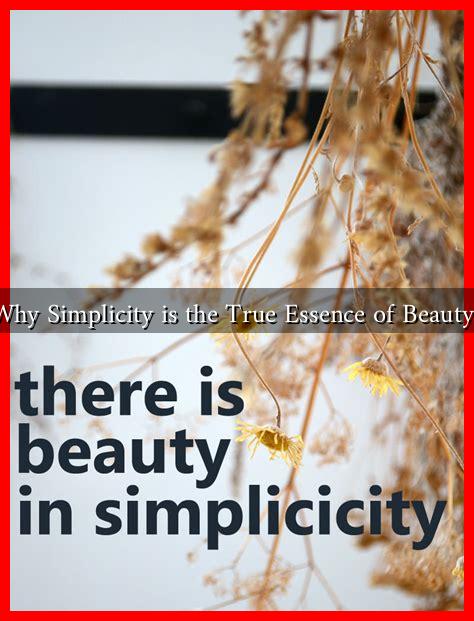-
Table of Contents
Why Simplicity is the True Essence of Beauty
In a world that often glorifies complexity and extravagance, the notion that simplicity embodies true beauty may seem counterintuitive. However, simplicity has a timeless appeal that resonates across cultures, art forms, and even in our daily lives. This article explores the profound connection between simplicity and beauty, supported by examples, case studies, and insights from various fields.
The Philosophy of Simplicity
Simplicity is not merely about minimalism; it is a philosophy that emphasizes clarity, purity, and functionality. The ancient Greek philosopher Socrates famously stated, “Simplicity is the ultimate sophistication.” This idea suggests that true beauty lies in the ability to convey profound messages through uncomplicated means.
Examples of Simplicity in Art and Design
Throughout history, many artists and designers have embraced simplicity as a core principle in their work. Here are a few notable examples:
- Japanese Zen Gardens: These gardens exemplify simplicity through their use of rocks, sand, and minimal vegetation. The arrangement encourages meditation and reflection, showcasing beauty in restraint.
- Apple’s Product Design: Apple’s commitment to simplicity is evident in its product design. The clean lines and intuitive interfaces of devices like the iPhone and MacBook have set industry standards and created a loyal customer base.
- Minimalist Architecture: Architects like Tadao Ando and Ludwig Mies van der Rohe have demonstrated that less can indeed be more. Their designs focus on open spaces, natural light, and functional elements, creating serene environments that evoke beauty.
The Psychological Appeal of Simplicity
Research in psychology supports the idea that simplicity is inherently appealing. A study published in the journal Cognition found that people tend to prefer simple designs over complex ones. This preference is linked to cognitive fluency, which suggests that our brains process simple information more easily, leading to a more positive emotional response.
Simplicity in Nature
Nature is perhaps the most compelling example of simplicity as beauty. The elegance of a single flower, the symmetry of a snowflake, or the vastness of a clear blue sky all exemplify how simplicity can evoke awe and admiration. The concept of “natural beauty” often refers to unadorned landscapes and organisms that thrive without human intervention.
Case Studies: Brands that Embrace Simplicity
Several brands have successfully leveraged simplicity in their marketing and product offerings, leading to increased customer loyalty and brand recognition:
- Muji: This Japanese retailer focuses on minimalistic products that prioritize functionality and sustainability. Their no-brand philosophy has attracted consumers seeking simplicity in a cluttered market.
- IKEA: Known for its straightforward designs and flat-pack furniture, IKEA embodies the principle of simplicity in both product design and customer experience, making home furnishing accessible and enjoyable.
- Google: The search engine’s clean interface and straightforward functionality have made it the go-to platform for information retrieval, demonstrating that simplicity can drive user engagement and satisfaction.
Conclusion: Embracing Simplicity in Our Lives
In conclusion, simplicity is not just a design principle; it is a way of life that can enhance our experiences and perceptions of beauty. By embracing simplicity, we can cultivate clarity, reduce stress, and foster deeper connections with the world around us. Whether in art, nature, or our daily routines, simplicity invites us to appreciate the essence of beauty without the distractions of complexity.
As we navigate an increasingly complicated world, let us remember that true beauty often lies in the simplest of things. By prioritizing simplicity, we can find joy in the ordinary and create a more meaningful existence.

